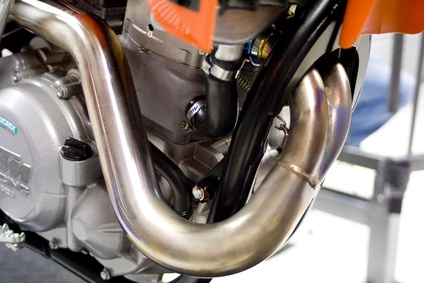
Stainless steel exhaust systems resist corrosion. This allows a stainless steel exhaust to outlive a standard steel exhaust. Cutting the exhaust tubing is an integral part of installing the exhaust system on your vehicle. Combining specialized cutting blades designed to cut through thin metal with a variable speed saw will ease the cutting process by reducing work hardening. Work hardening occurs when heat builds up in the stainless steel, making it harder to cut.
Use a tape measure to mark the cut length on the pipe with a permanent marker. Place one mark every 1/4 inch to make a dotted line around the circumference of the pipe.
Secure the stainless steel exhaust pipe in a bench vise with the dotted line extending 3 inches past the vise jaws. Tighten the vise to hold the pipe tightly without distorting or denting the sides of the pipe.
Install a 24 TPI blade in a reciprocating saw. Pull on the end of the blade to ensure it is secure. Plug the saw into an electrical socket.
Set the toothed edge of the saw blade on the dotted line with the saw parallel to the floor. Pull the saw's trigger slightly to start the blade moving slowly. Keep the saw blade aligned with the dotted line as you cut. Stop cutting if the stainless steel starts to glow a dull orange.
Slide one end of a half-round file into the cut end of the stainless steel exhaust. Push the file around the inside of the pipe to remove the burr left from the reciprocating saw. Slide the flat side of file around the outside of the cut to smooth the outer edge.